GOMPHRENA
Gomphrena
L., Sp. Pl. 1: 224. 1753; Gen. Pl. ed. 5: 105. 1754; Hook. f., Fl. Brit. India 4: 372. 1885; Schinz in E. & P. Pflanzenfam. ed. 2, 16c: 77. 1934; Fl. China @ eFloras.org 5: 428; Clemants, Fl. North Amer. @ eFloras.org 4: 451; Fl. Pak. @ eFloras.org p. 43.
Annual or perennial herbs. Stems ascending, decumbent, prostrate or erect. Leaves opposite, entire, blade ovate to obovate, long pilose abaxially, sometimes adaxially also. Inflorescences terminal or axillary, capitate or spicate, solitary or glomerate, often subtended by an involucre of a pair of sessile leaves. Flowers bisexual, hypogynous, bracteate, bracteolate; bracts persistent; bracteoles laterally compressed, carinate, often +/- longitudinally winged or cristate along the dorsal surface of midrib, deciduous with fruit. Tepals 5, erect, free or connate proximally, +/- lanate dorsally, at least the inner 2 usually indurate at the base of fruit. Stamens 5, monoadelphous, filaments connate basally into a tube; pseudostaminodes absent; (lateral appendages present, 3-parted at apex), anthers monothecous. Ovary unilocular with a single pendulous ovule; style short or long; stigmas 2 or 3, linear. Utricle globose or oblong, compressed, thin-walled, irregularly rupturing. Seed 1, lenticular, subglobose to ovoid, smooth.
139 species
Gomphrena globosa
Gomphrena globosa
L., Sp. Pl. 1: 224. 1753; Hook. f., Fl. Brit. India 4: 732. 1885; Stewart, Ann. Cat. Vasc. Pl. W. Pak. 232. 1972; Fl. China @ eFloras.org 5: 428; Fl. North Amer. @ eFloras.org 4: 453; Fl. Pak. @ eFloras.org p. 44.
Annual herb, erect, 20-50 cm tall. Stem stout, branched; branches striate or sulcate, slightly quadrangular, slightly inflated at nodes, densely clothed with appressed white hairs, at least when young. Leaves opposite, simple; petiole 1-2 cm long, grey-pubescent; leaf blade oblong or oblong-obovate, 2.5-10 cm x 1.5-5 cm, narrowing towards base, margin entire, ciliate, apex acute or obtuse, thinly pilose on both surfaces. Inflorescence sessile, usually solitary, globose or depressed-globose, ca. 2 cm in diameter, purple, pinkish to deep red; head subtended by a pair of green leaves, leaves nearly sessile, broadly to subcordate-ovate. Flowers bisexual, +/- actinomorphic, hypogynous, bracteate, bracteolate. Bracts deltoid-ovate, 3-5 mm, mucronate with shortly excurrent midrib; bracteoles strongly laterally compressed, navicular, ca. 10 mm long, mucronate with excurrent midrib, midrib furnished adaxially with a broad, irregularly dentate crest. Tepals 5, +/- 6 mm long, white to pink narrowly lanceolate, outer 3 flat, more lanate and more markedly indurate at base than inner tepals, nerve 1, thick and greenish below, thinner and excurrent in a short mucro at the tip. Stamens 5, monoadelphous basally into a tube, staminal tube subequalling the perianth, anthers alternating with staminal teeth, staminal teeth 5, bilobed; pseudostaminodes absent. Ovary unilocular with a single pendulous ovule; style ca. 1.2 mm long; stigmas 2, divergent, subequalling or slightly longer than style.
Utricles subglobose, ca. 2.5 mm in diameter. Seeds compressed-ovoid, ca. 2 mm, brown, almost smooth, shining.
Common Names: Globe Amaranth, Gomphrena, Bachelor’s Buttons; Gul-e-Makhmal (Hindi)
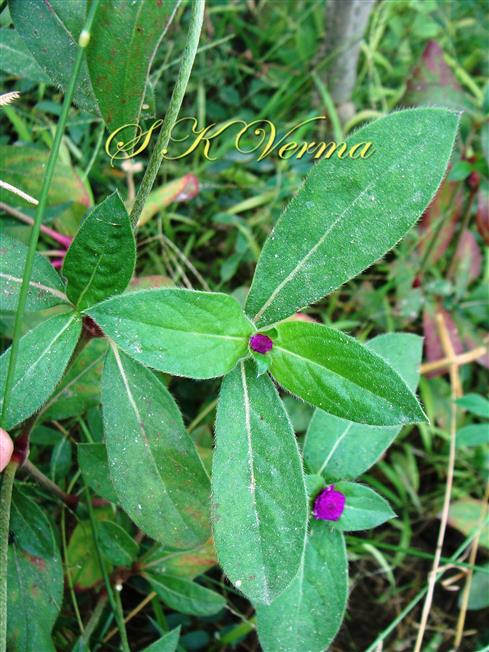
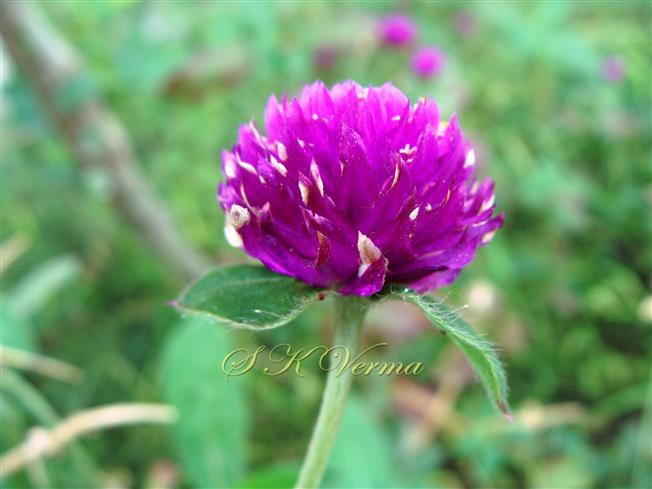
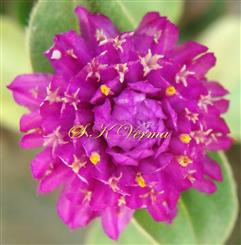
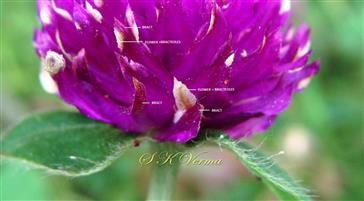

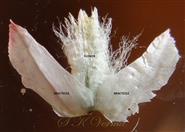
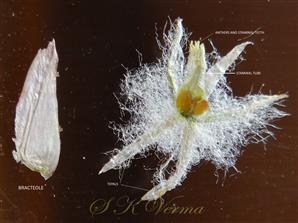

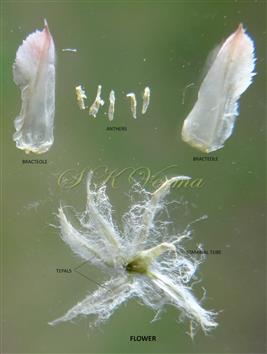

-DSC00773.jpg)








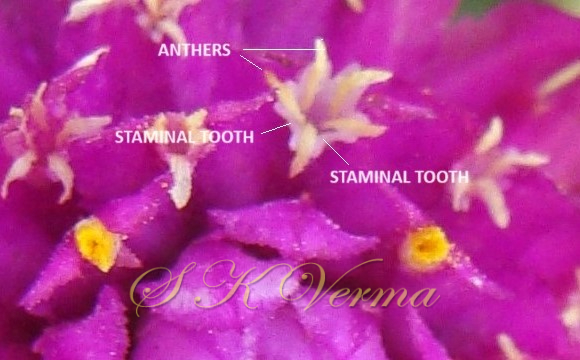

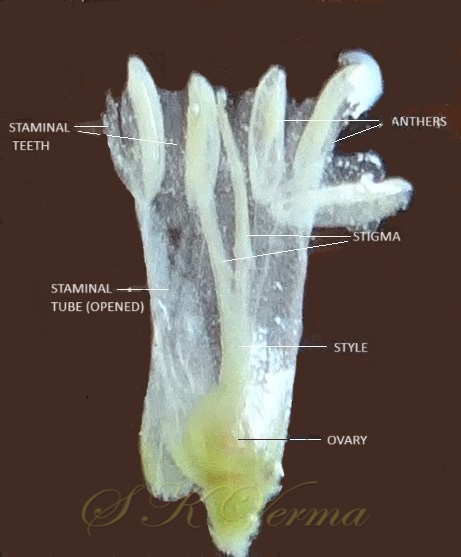
-DSC00773.jpg)